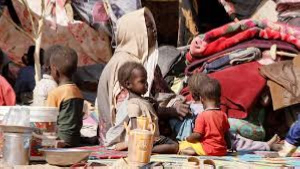Flooding is a recurring and devastating problem in Ghana, causing loss of lives, displacement, and extensive damage to infrastructure, agriculture, and the economy. The country's geographical location, coupled with urbanization, poor drainage systems, and climate change, has contributed to the severity and frequency of flooding.
To address this pressing issue, it is crucial to develop a comprehensive and sustainable approach that combines preventive measures, effective disaster management, and community engagement. This article explores the key challenges faced by Ghana regarding flooding and presents a roadmap for the way forward.
In the first place, the enhancement of infrastructure and drainage systems should be of pressing concern in our bid to overcome flooding issues.
One of the primary causes of flooding in Ghana is inadequate infrastructure, particularly poorly designed and maintained drainage systems. It is essential to invest in upgrading existing infrastructure and constructing new, efficient drainage systems that can effectively manage stormwater. This involves collaborations between government agencies, local authorities, and international organizations to allocate funds and implement comprehensive urban planning strategies.
Again, the need to adapt to climate change and resilience is one of the surest ways to tackle flooding.
Ghana must prioritise climate change adaptation measures to mitigate the impact of flooding. This includes integrating climate resilience into urban planning, constructing flood-resistant buildings, and implementing sustainable land management practices. Developing early warning systems and improving weather forecasting capabilities are also crucial to provide timely alerts and minimize the loss of lives and properties during flood events.
Moreover, strengthening disaster preparedness and response is key in dealing with flood events.
Enhancing disaster preparedness and response mechanisms is vital for minimizing the negative consequences of flooding. This involves training and equipping emergency response teams, establishing emergency shelters, and conducting regular simulation exercises. Collaboration among government agencies, civil society organizations, and the private sector is essential to ensure a coordinated and effective response during flood emergencies.
Additionally, public awareness campaigns and community engagement are crucial to address possible risks of flood. Raising public awareness about the causes and impacts of flooding is crucial for fostering a culture of preparedness and resilience.
Community engagement plays a vital role in flood risk reduction, as local communities possess valuable knowledge and insights about their surroundings. Implementing educational campaigns, conducting workshops, and involving local communities in decision-making processes can empower individuals and communities to take proactive measures to mitigate flooding risks.
Finally, sustainable land use and environmental protection is pivotal in dealing with flooding.
Uncontrolled deforestation, improper waste management, and encroachment on water bodies exacerbate flooding in Ghana. Promoting sustainable land use practices, reforestation, and protection of wetlands can help regulate water flow and reduce the risk of flooding. Strict enforcement of environmental regulations and policies, along with public participation, will be critical in achieving long-term environmental sustainability.
Addressing the issue of flooding in Ghana requires a collaborative approach. By investing in infrastructure, prioritizing climate change adaptation, strengthening disaster preparedness, engaging communities, and promoting sustainable land use, Ghana can pave the way for a more resilient and flood-resistant future. The government, alongside international partners, must take proactive steps to implement these measures, ensuring the safety and well-being of the population while mitigating the economic and social impacts of flooding in the country.
Opinions of Tuesday, 11 July 2023
Columnist: Maxwell Baah















